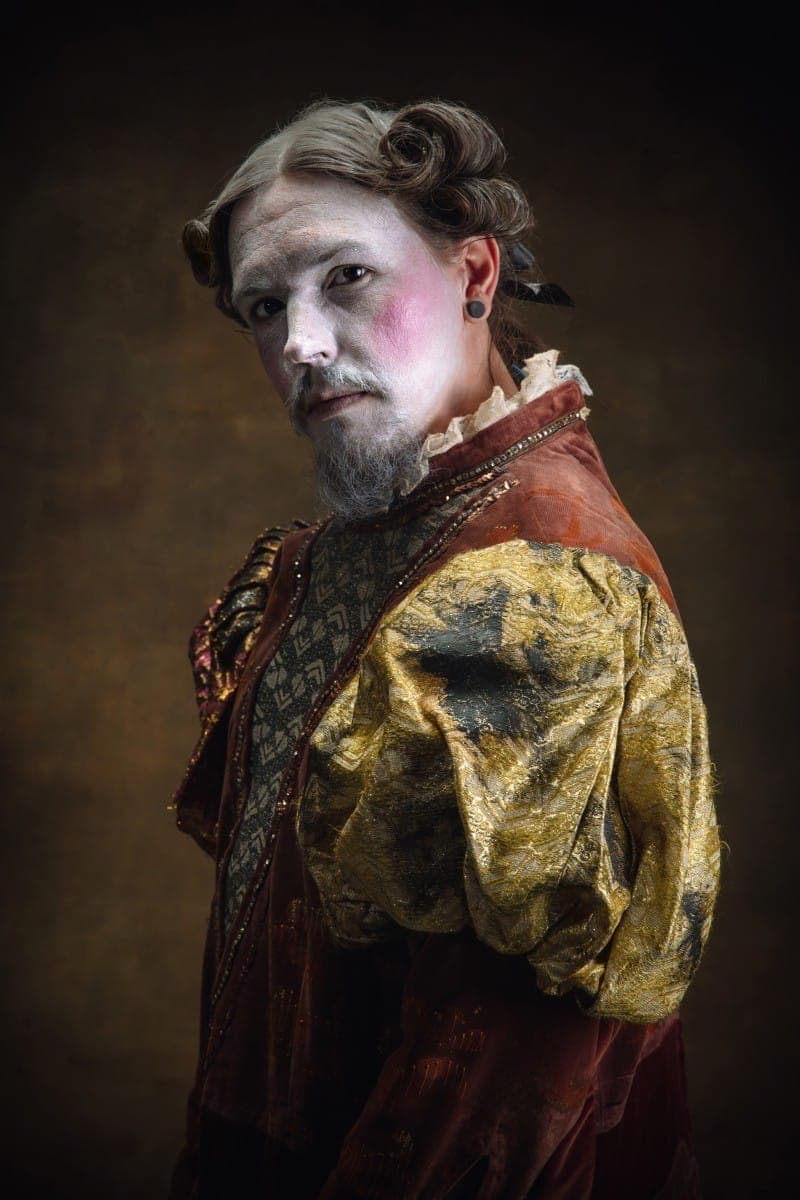Skincare
Makeup in Shakespearean Theater
During Shakespeare’s time, theater was a burgeoning art form, drawing large crowds eager to witness the latest plays. The actors of this era relied heavily on makeup to enhance their performances, transforming themselves into a wide array of characters. The use of makeup was not merely for aesthetic purposes but played a crucial role in defining characters and making them believable to audiences. The rudimentary makeup techniques of the time reflect the creativity and resourcefulness of actors and playwrights in the Elizabethan era.
The Importance of White Lead
White lead was a staple in the makeup kits of Shakespearean actors. This toxic substance was used to create a pale complexion, which was highly fashionable among the English elite and symbolized purity and nobility. Applying white lead to the face and neck, actors could easily distinguish themselves from commoners on stage, aligning their appearance with the characters they portrayed. However, the use of white lead had severe health implications. Prolonged exposure led to lead poisoning, causing a range of symptoms from skin damage to serious internal health issues. Despite the dangers, the pursuit of an idealized appearance often outweighed concerns for personal health.
Rouge and its Significance
Rouge was another important component of Shakespearean makeup. Made from cinnabar (a red mercury sulfide mineral) or other naturally sourced pigments, rouge was applied to the cheeks and lips to give actors a youthful and healthy look. This was particularly significant for female characters, who were played by young boys, as the rouge helped create a more feminine appearance. The use of rouge also varied with the character’s social status and age, with older or lower-status characters often depicted with less vibrant colors. This differentiation helped the audience quickly grasp the social dynamics and relationships within the play.




Eye Makeup and Characterization
Eye makeup played a crucial role in accentuating expressions and emotions. Kohl, a dark powder made from ground minerals, was commonly used to line the eyes and darken the lashes and brows. This not only made the eyes stand out under the dim lighting conditions of the time but also added depth to the actor’s facial expressions. The use of kohl could signify various attributes, from the seductive allure of a female character to the menacing presence of a villain. The dramatic effect of kohl enhanced the visual storytelling, making the actors’ performances more compelling.
Hair and Wigs
Wigs and hairpieces were essential in transforming actors into their characters. These items were often made from human or animal hair and were meticulously crafted to fit the period and social status of the character. Noble characters would wear elaborate wigs to signify their wealth and status, while commoners might wear simpler or more disheveled hairpieces. The use of wigs also allowed for quick changes between scenes, as actors could easily switch characters by changing their hair. This versatility was especially important in an era when plays featured large casts but often had fewer actors.
Materials and Application Techniques
The materials used in Shakespearean makeup were derived from a variety of sources, including minerals, plants, and animal products. Applying these materials required a certain level of skill and artistry. Actors and makeup artists would use brushes, sponges, and even their fingers to apply and blend makeup. Given the lack of modern cosmetic tools and products, the application process was labor-intensive and required constant touch-ups throughout performances. The ingenuity involved in creating and applying makeup is a testament to the dedication of Shakespearean actors to their craft.
Health Risks and Long-Term Effects
The health risks associated with Shakespearean makeup were significant. Besides the lead poisoning from white lead, the use of cinnabar and kohl posed their own dangers. Mercury from cinnabar could lead to mercury poisoning, causing neurological and psychological issues. Prolonged use of these substances often resulted in chronic health problems, yet the desire to achieve a certain look prevailed. The physical toll on actors was considerable, but the societal and professional pressure to conform to beauty standards and theatrical conventions was immense.
Audience Perception and Makeup Evolution
The audience’s perception of makeup in Shakespeare’s time was influenced by societal norms and expectations. Theatrical makeup was not merely about personal appearance but also about conveying a character’s essence and social standing. Audiences of the time were accustomed to exaggerated features and bold colors, which helped convey emotions and actions from a distance. Over time, the techniques and materials evolved, influenced by advances in chemistry and changes in fashion. However, the core principles of using makeup to enhance and transform remained constant.
Statistical Insight
A study on the health impacts of historical makeup practices revealed that approximately 60% of actors who regularly used white lead makeup in the 16th and 17th centuries suffered from some form of lead poisoning. This statistic underscores the dangerous nature of theatrical makeup during Shakespeare’s era and the lengths to which actors would go to perfect their stage appearance.
Modern Comparisons
Comparing Shakespearean makeup to modern theatrical makeup highlights significant advancements. Today, actors benefit from non-toxic, hypoallergenic products that can achieve similar effects without health risks. The evolution of makeup has also seen the introduction of synthetic materials and advanced application tools, allowing for more intricate and realistic transformations. Despite these advancements, the fundamental role of makeup in theater—to enhance character portrayal and storytelling—remains unchanged. This continuity connects modern performers with their Shakespearean predecessors, emphasizing the enduring power of theatrical makeup.
Cultural and Historical Context
The makeup practices of Shakespeare’s time reflect broader cultural and historical contexts. The use of specific materials and techniques was influenced by contemporary beauty standards, societal hierarchies, and available resources. Theatrical makeup served as a bridge between reality and the imagined world of the play, enabling actors to step into their roles fully. Understanding these practices offers insight into the daily lives and challenges faced by Shakespearean actors, highlighting their ingenuity and resilience in the face of adversity.
Conclusion
Shakespearean actors’ use of makeup was a complex interplay of artistry, necessity, and risk. The materials and techniques they employed, though primitive by today’s standards, were instrumental in bringing characters to life and captivating audiences. The evolution of theatrical makeup since then has mitigated many of the health risks, but the core purpose of makeup in theater—to transform and enhance—remains a testament to the enduring legacy of Shakespearean theater. Through the lens of makeup, we gain a deeper appreciation for the craft and dedication of actors both past and present.




